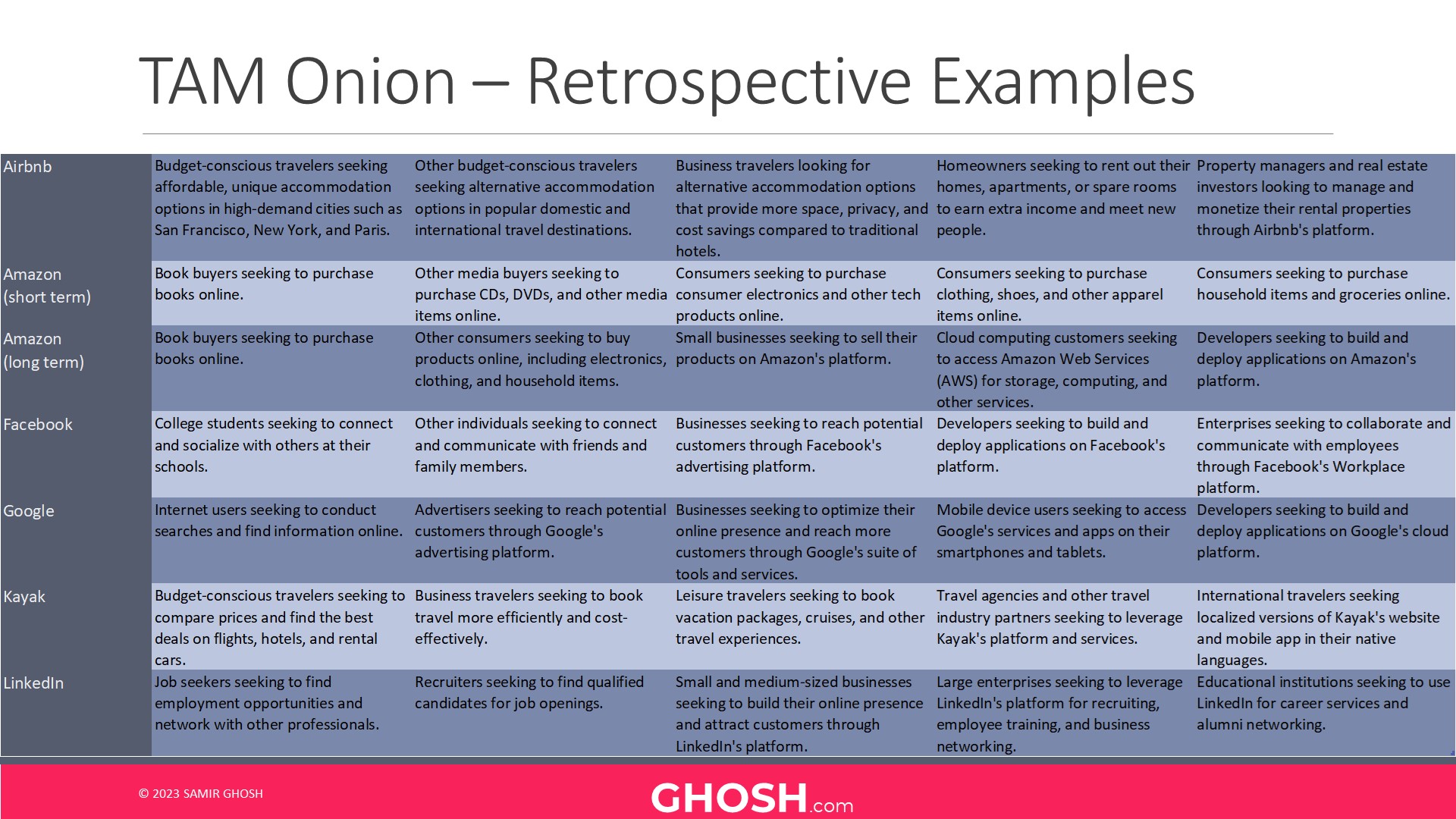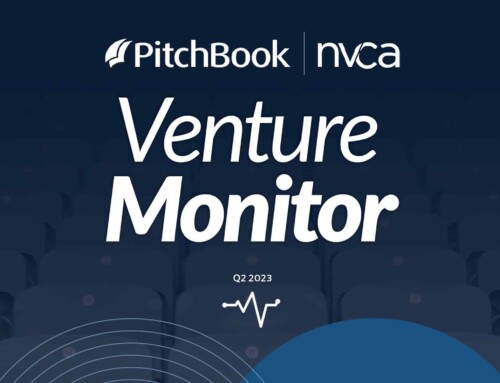Since blogging about my TAM Onion framework in 2019, I’ve had requests to provide examples of the TAM Onion approach by successful companies such as AirBNB, Google, or LinkedIn, even if done retrospectively. Following is a table of some potential examples. These are imagined retrospectively, so cannot be assumed to be the actual strategy in these companies’ early days. However, hopefully, they help illustrate the application of the TAM Onion.
| Company | Spearhead Market Segment | Segment 2 | Segment 3 | Segment 4 | Segment 5 |
| Airbnb | Budget-conscious travelers seeking affordable, unique accommodation options in high-demand cities such as San Francisco, New York, and Paris. | Other budget-conscious travelers seeking alternative accommodation options in popular domestic and international travel destinations. | Business travelers looking for alternative accommodation options that provide more space, privacy, and cost savings compared to traditional hotels. | Homeowners seeking to rent out their homes, apartments, or spare rooms to earn extra income and meet new people. | Property managers and real estate investors looking to manage and monetize their rental properties through Airbnb’s platform. |
| Amazon (short term) |
Book buyers seeking to purchase books online. | Other media buyers seeking to purchase CDs, DVDs, and other media items online. | Consumers seeking to purchase consumer electronics and other tech products online. | Consumers seeking to purchase clothing, shoes, and other apparel items online. | Consumers seeking to purchase household items and groceries online. |
| Amazon (long term) |
Book buyers seeking to purchase books online. | Other consumers seeking to buy products online, including electronics, clothing, and household items. | Small businesses seeking to sell their products on Amazon’s platform. | Cloud computing customers seeking to access Amazon Web Services (AWS) for storage, computing, and other services. | Developers seeking to build and deploy applications on Amazon’s platform. |
| College students seeking to connect and socialize with others at their schools. | Other individuals seeking to connect and communicate with friends and family members. | Businesses seeking to reach potential customers through Facebook’s advertising platform. | Developers seeking to build and deploy applications on Facebook’s platform. | Enterprises seeking to collaborate and communicate with employees through Facebook’s Workplace platform. | |
| Internet users seeking to conduct searches and find information online. | Advertisers seeking to reach potential customers through Google’s advertising platform. | Businesses seeking to optimize their online presence and reach more customers through Google’s suite of tools and services. | Mobile device users seeking to access Google’s services and apps on their smartphones and tablets. | Developers seeking to build and deploy applications on Google’s cloud platform. | |
| Kayak | Budget-conscious travelers seeking to compare prices and find the best deals on flights, hotels, and rental cars. | Business travelers seeking to book travel more efficiently and cost-effectively. | Leisure travelers seeking to book vacation packages, cruises, and other travel experiences. | Travel agencies and other travel industry partners seeking to leverage Kayak’s platform and services. | International travelers seeking localized versions of Kayak’s website and mobile app in their native languages. |
| Job seekers seeking to find employment opportunities and network with other professionals. | Recruiters seeking to find qualified candidates for job openings. | Small and medium-sized businesses seeking to build their online presence and attract customers through LinkedIn’s platform. | Large enterprises seeking to leverage LinkedIn’s platform for recruiting, employee training, and business networking. | Educational institutions seeking to use LinkedIn for career services and alumni networking. |








Leave A Comment